- TEACHING MINISTRY
- PREACHING MINISTRY
- HEALING MINISTRY
- SELF SUPPORTING
- MISSION NETWORK
- Videos
- MISSIONARY SPOTLIGHT
Natural Farming Philosophy

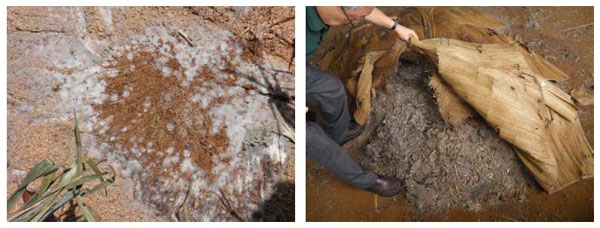

Natural Farming respects life. It opposes human exploitation of life, as ironic as that may sound. Respecting the life of nature is the best way to achieve top quality and yield. We prevent disease rather than curing it with medicines. We raise healthy animals rather than feeding them hormones and antibiotics.
Crops and livestock raised by Natural Farming are very healthy. They have almost no disease and show very strong resistance to climatic fluctuation. Natural Farming orchards in Korea were the least damaged by the notorious typhoon that slashed other farms.
1.3 ProduceHigh Quality
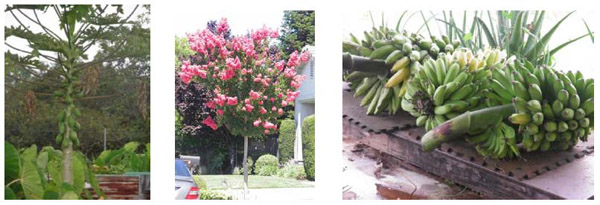
Natural Farming products have high quality, good taste and better yield. People commonly think that by converting to organic farming you will have smaller yields, lower quality and smaller-sized fruit. In Natural Farming it’s the opposite. We don’t go back to the past. Rather, we take a leap into the future.

Natural Farming does not use pesticides. Pesticides not only kill insects, they reside in the soil and fruit. When absorbed, it can do serious harm to our bodies and even to our offspring.
Instead of using toxic chemicals, we use light, alcohol, aroma, poisonous plants and so forth to control pests. More surprisingly, an ecology that recovers natural balance will show a drop in the occurrence of pests and diseases.
2.2 No Herbicide

Natural Farming does not use herbicides. Killing weeds with chemicals is not the only solution, nor is it wise. Herbicides not only kill weeds, they are lethal to humans.
Natural Farming uses weeds rather than killing them. We actually grow wild grass, such as rye and clover, for mulching. Natural Farming orchards are green with grass growing between the fruit trees. The grass prevents soil erosion, holds moisture, propagates microorganisms, produces organic fertilizer, improves soil ventilation and suppresses pests. How can it only be a thief of nutrients?
2.3 No Tillage

Natural Farming does not till the land. Instead of using machines, we use earthworms, microorganisms and small animals. Machines can plow 20 centimeters at best, whereas earthworms will dig 7 meters. The excretions of the earthworms turn into the best soil.
After practicing Natural Farming, the soil inflates like a balloon. Our little workers till the soil so well that your hand will slide in as if into a soft cake.
Because you don’t till the land, the grass seed in the soil does not come up to the surface. In other words, after the grass on the surface has germinated and died, you will have no more weed problems. There is a link between no tillage and no herbicides.
2.4 No Chemical Fertilizer
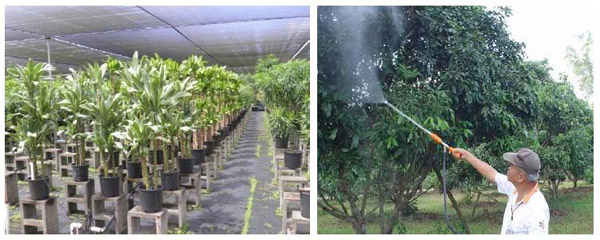
Natural Farming does not use chemical fertilizers. Nor does it follow the common practice of applying over half of the fertilizer as base manure. Crops will become weak if given too much food at an early stage.
Nitrogen, phosphorous, potassium, calcium and all other elements that would be commonly given in the form of chemical fertilizer are substituted with Natural Farming. Fish amino acid provides nitrogen, eggshells give calcium, and animal bones are a source of phosphoric acid. Our Natural Farming inputs are not only cheap but highly effective.
2.5 No Pollution

Natural Farming animal houses do not emit any wastewater. There is no need to install an expensive treatment machine. All the treatment is done right on the floor itself. As soon as feces fall on the floor, it is quickly decomposed by powerful microorganisms. The floor is not made from concrete, it is touching the soil –it’s alive. Rice straw, sawdust, and fresh soil are used for flooring.
Even if you use a Natural Farming animal house for many years, you will never need to clean the feces. They do not pile up and they do not smell. Our method is revolutionary, considering the serious pollution that livestock wastewater is doing in our rivers. Natural Farming animal housings do not smell.
Utilizing natural powers like the sun, wind and microorganisms, the floor is always dry and fluffy. It’s a common sight to see a Natural Farming animal house right beside a human house.
2.6 No Artificial Heating

Natural Farming animal houses do not need any artificial heating. Rather than consuming fossil fuel or electricity, we think it is wiser to develop the animal’s natural resistance against cold. A healthy animal does not need such human-improvised help. Natural Farming chicks grow short, tough and dense hair, whereas ordinary chicks have long, soft and sparse hair. In extremely cold areas or weather, we use heat from the fermentation of compost.
2.7 Farming inputs are made by farmers
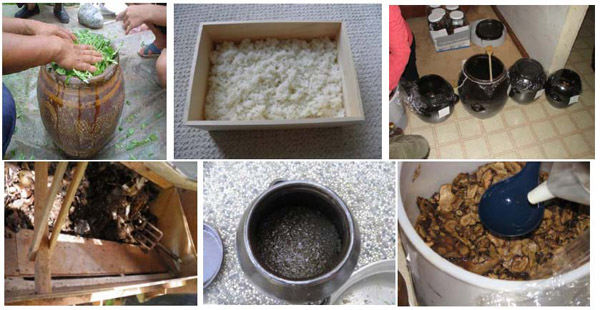
One of the most important aspects of Natural Farming is that the farmers make what they need. Fertilizers, soil improvers, pest controllers, and cures for disease are all made by the farmers themselves using only natural materials based on the Nutritive Cycle theory.
We do not simply buy materials from the market and follow the manual. We make what we need and follow the principles of nature. By doing so, we save money and get better results. Our fields, hills, forests, rivers, oceans and all surrounding areas are full of useful materials that are the tools of our farming. But we must open our eyes. This is why Natural Farming can be a powerful tool for third world farmers who cannot afford to buy expensive imported farming inputs.
Our important inputs include Indigenous Microorganism (IMO), Fermented Plant Juice (FPJ), Oriental Herbal Nutrient (OHN), Lactic Acid Bacteria (LAB), Fish Amino Acid (LAB), Water-soluble Calcium (WCA), Water-soluble Calcium Phosphate (WCP), and Insect Attractant (IA). These are all produced easily and cheaply at home and most importantly, they work!
2.8 Natural Feed made by Farmers

Natural Farming animals not only eat commercial feed from the market. They also eat brown rice grains and bamboo leaves immediately after hatching. Tough food develops their intestines. Animals reared with Natural Farming are healthy, strong and have no disease.
We do not give antibiotics, hormones, colorants or other chemicals to our animals. We give them what nature has given them to eat. We use grass, rice husk, rice bran, left-over food, sawdust and even soil for feed. They go through our special treatment and assorting.
2.9 Nutritive Cycle Theory
Natural Farming cares for the crops and livestock according to the “Nutritive Cycle Theory.” It’s a theory that enables us to read the changing growth stages of a plant or animal. We apply fertilizer, feed, or prescription precisely according to this cycle. Natural Farming is a very elaborate, complicated and precise method that denies a “spray-and-forget” kind of approach.
Just like humans, crops and livestock also need nitrogen when young, phosphoric acid during adolescence and calcium after maturity. Also the amount of food they need to take in will constantly change, just as a baby cannot eat a grown-up’s food.
Natural Farming emphasizes the right use of the right material, at the right stage, in the right quantity.
3. Natural Inputs
All Natural Farming inputs are made by the farmers utilizing only natural materials. Even though we do not use chemicals sold in the market, our inputs have enough effect to supercede them. Here we introduce some of our unique inputs.
3.1 Indigenous Microorganism (IMO)

Indigenous microorganism is a powerful input that improves soil condition and crop health. It is collected from nearby forests or fields using a simple wooden lunch box with steamed rice. By utilizing microorganisms that survived and adapted to that local place for many generations, we can have a safe, cheap, and yet powerful microorganism input.
3.2 Oriental Herbal Nutrient (OHN)

Oriental herbal nutrient is made from herbs valued in oriental medicine.
3.3 Fermented Plant Juice (FPJ)

Fermented plant juice is made by fermenting plant parts in brown sugar. Sprouts and baby fruits with high hormone concentration, full grown fruits, flower abundant in honey, and any vigorous plants are good ingredients.
3.4 Other Inputs (WSC, WSP, LAB, FAA, Sea Water, BRV..)
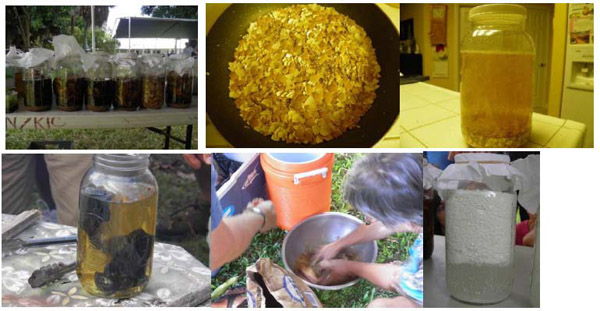
Lactic acid bacteria is exactly the same as yoghurt. Other inputs include fish amino acid, water-soluble calcium from eggshells, water-soluble phosphoric calcium from animal bones and seawater.
4. NCNF – Northern California Natural Farming
1.NCNF can provide training classes – basic class, hands-on class, advanced class and Web on-line teaching.

2. NCNF can provide consulting services for vegetables, fruit trees, and livestock.

3. NCNF can provide IMO#4, Natural inputs, and livestock houses.

4. If you need any help, contact NCNF, Jake Rhee who is the CGNF certified instructor at jrhee2008@gmail.com or e3Empower www.e3empower.com .
5. NCNF has its own facebook, http://www.facebook.com/groups/ncnfa. If you want to share your experience in natural farming, join with us. This site is a closed group. Let us know if you want to join us.


